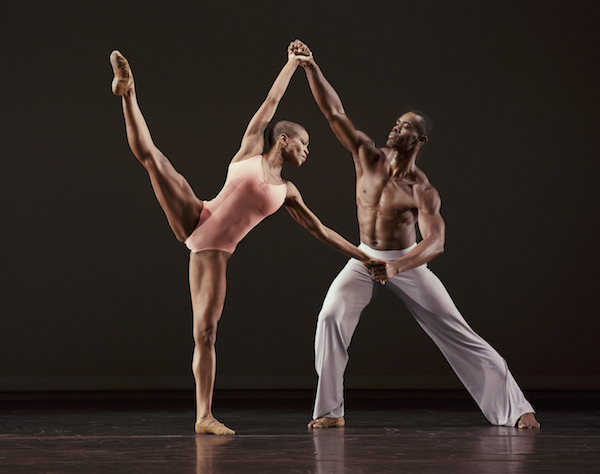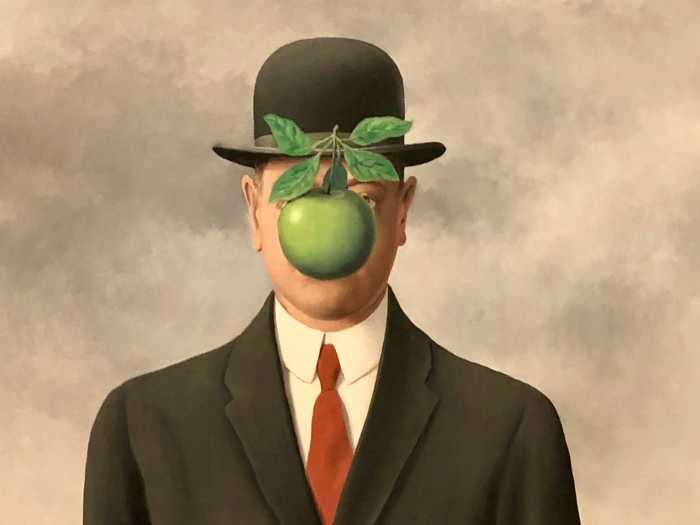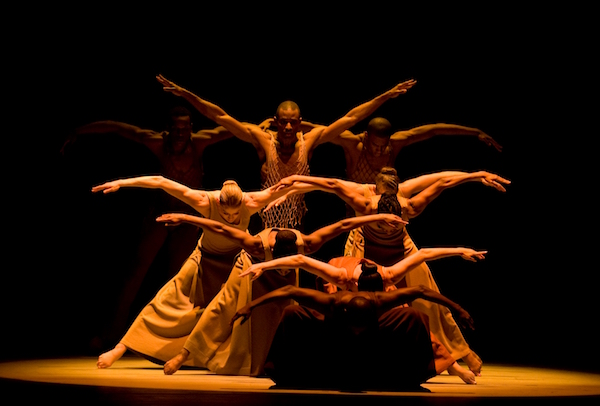
BY DUSICA SUE MALESEVIC | Alvin Ailey’s “Revelations,” 57 years on, is, well, still a revelation.
Performed as part of the Alvin Ailey American Dance Theater’s 2017 season at New York City Center, the piece — created when the choreographer was just 29 — feels as fresh and as relevant as ever, and certainly got those in attendance up and clapping.
A dance told in three acts, it begins with a circle of light that bathes the company — dressed in muted tones except for a female dancer in red — as they stretch their arms to the heavens, at times pleading with their hands clasped and thrust up. Other movements evoke birds opening their wings as the dancers bow their heads in what could be supplication.
Adding to the sense of a religious revival, the performance this reviewer saw on the afternoon of Sat., Dec. 2, had live music and singing.
In the second act, for one scene, dancers are resplendent in white, one carrying an umbrella, others flags, as they cross the river — ribbons of azure and dark blue that stream across the stage — while “Wade in the Water” is sung. Clifton Brown, who has been with the company since 1999, gave an affecting solo — at times, the crisp lines of the Horton technique on display — to the song “I Wanna Be Ready.”
For the finale, a single female dancer, complete in yellow from her hat to her dress to her fan, steps on stage with a stool in front of the bright, hot sun against a red background. Soon, other church ladies and then the men, dressed in formal attire, join her as they dance to “Rocka My Soul in the Bosom of Abraham.” The enthusiasm for the piece could be heard through a smattering of claps that grew louder as people stood for the company’s curtain call.
“Revelations,” it is noted on the Ailey website, “pays homage to and reflects the cultural heritage of the African-American, which Ailey considered one of America’s richest treasures — ‘sometimes sorrowful, sometimes jubilant, but always hopeful.’ ” It is said to stem from the choreographer’s church experience in Texas, and the works of James Baldwin and Langston Hughes, according to the website.
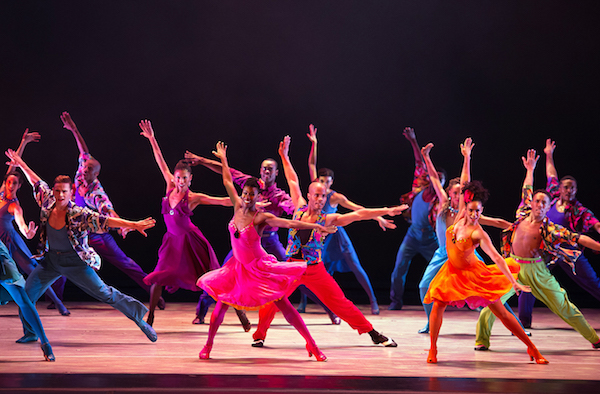
If “Revelations” has stood the test of time, then the matinee’s first piece, “The Winter in Lisbon,” is like a photograph that is fading at its edges. The piece, from 1992 and choreographed by Billy Wilson, had moments that felt outdated — a male soloist drawing the outline of a woman’s body with his hands, a kiss that is thrown and then caught, and a male dancer burying his head into a female dancer’s chest.
Nonetheless, the Ailey dancers excellently executed the moves, and the bright fuchsia, orange, violet and green costumes were a feast for the eyes.
Christopher Wheeldon’s startling “After the Rain Pas de Deux,” from 2005, brought on oohs and aahs from the audience, who, like this reviewer, marveled at the duet, performed by Jacqueline Green and Yannick Lebrun. Green, dressed in a coral leotard, and Lebrun, wearing white, flowing pants, began the pas de deux side by side, moves in sync, before turning and engaging with each other in a way that felt authentic and brimming with chemistry, and showcased little moments such as when Green kicked Lebrun’s feet to propel him forward.
The lifts wowed: Lebrun raised Green while she formed an “X” with arms and legs flung out and her feet pointed flat, and, in another, Green became like a prow on a boat, one of her legs on Lebrun’s thighs as he elevated her in the air steadily.
Lighting played an important role throughout each dance, highlighting moves and acting as a character. For Robert Battle’s “Mass” from 2004, light and smoke poured down from above, reminiscent of a stained glass window and took the audience to church.
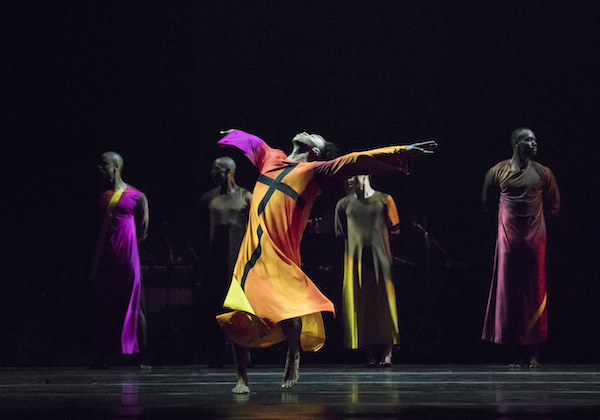
Battle, who took over as artistic director of the company in July 2011, said in promotional materials the piece was inspired by a choral concert, and, indeed, from the lighting, music and long robes of dark brown, oranges, pinks and red festooned with crosses, it was as if a Caravaggio had been brought to life. Pounding their feet on their tiptoes, the dancers used their hands to form an incomplete circle — a movement repeated throughout the piece that had an arc with slow downs and quicker-paced moments. The piece was compelling — a study of discord and harmony.
ALVIN AILEY AMERICAN DANCE THEATER | New York City Center (131 W. 55th St. | Through Dec 31: Schedule varies, Tue.-Sat. evenings, Wed., Sat.-Sun. matinees | Tickets start at $29 at alvinailey.org
